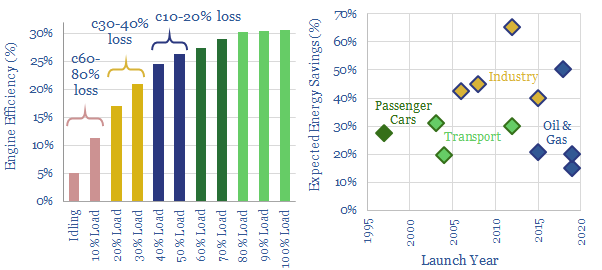Gas and diesel engines can be particularly inefficient when idling, or running at 20-30% loads. At these levels, their fuel economy can be impaired by 30-80%. This is the rationale for hybridizing engines with backup batteries: the engines are always run at efficient, 80-100% loads, including to charge up the batteries, which can better cover lower intensity energy needs.
Hybrid passenger cars are the best known example, since Toyota re-introduced them in the late 1990s. c25-30% energy savings are achieved, including through engine down-sizing and regenerative breaking
Industrial applications are also increasingly taking hold as battery costs come down, achieving even higher, 30-65% energy savings. This data-file summarizes a dozen examples, from oil and gas, marine, construction and even the machinery at LNG plants.
